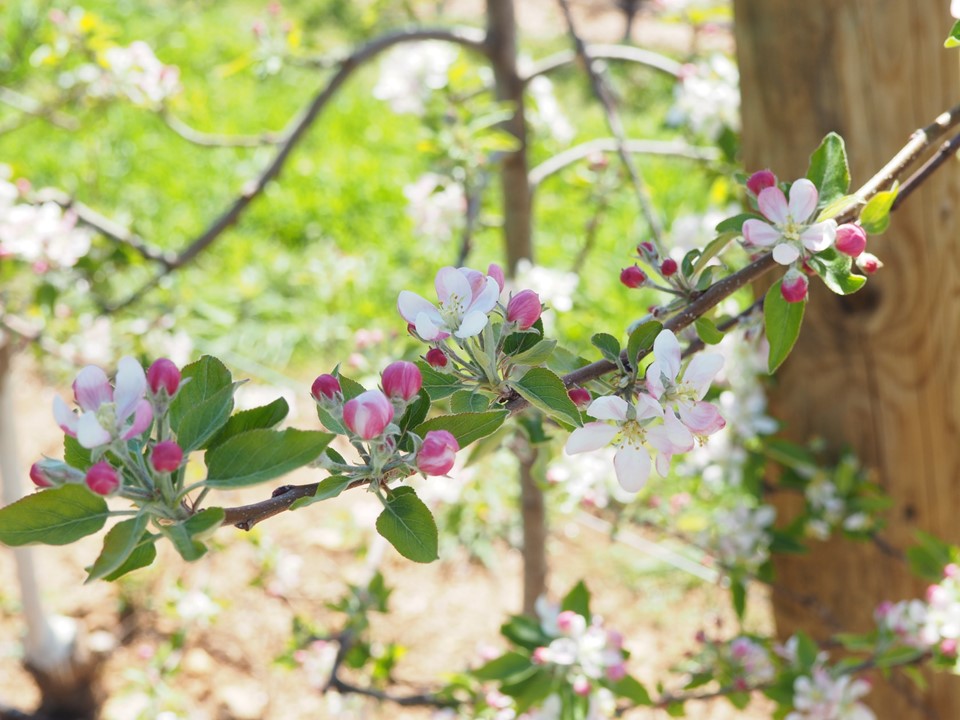Crop Load Management Update: Pink to Bloom
go.ncsu.edu/readext?668347
en Español / em Português
El inglés es el idioma de control de esta página. En la medida en que haya algún conflicto entre la traducción al inglés y la traducción, el inglés prevalece.
Al hacer clic en el enlace de traducción se activa un servicio de traducción gratuito para convertir la página al español. Al igual que con cualquier traducción por Internet, la conversión no es sensible al contexto y puede que no traduzca el texto en su significado original. NC State Extension no garantiza la exactitud del texto traducido. Por favor, tenga en cuenta que algunas aplicaciones y/o servicios pueden no funcionar como se espera cuando se traducen.
Português
Inglês é o idioma de controle desta página. Na medida que haja algum conflito entre o texto original em Inglês e a tradução, o Inglês prevalece.
Ao clicar no link de tradução, um serviço gratuito de tradução será ativado para converter a página para o Português. Como em qualquer tradução pela internet, a conversão não é sensivel ao contexto e pode não ocorrer a tradução para o significado orginal. O serviço de Extensão da Carolina do Norte (NC State Extension) não garante a exatidão do texto traduzido. Por favor, observe que algumas funções ou serviços podem não funcionar como esperado após a tradução.
English
English is the controlling language of this page. To the extent there is any conflict between the English text and the translation, English controls.
Clicking on the translation link activates a free translation service to convert the page to Spanish. As with any Internet translation, the conversion is not context-sensitive and may not translate the text to its original meaning. NC State Extension does not guarantee the accuracy of the translated text. Please note that some applications and/or services may not function as expected when translated.
Collapse ▲Recent warm temperatures accelerated reproductive bud development dramatically over the past week. Full bloom was reported at low elevation sites and high elevation sites have a range of bloom stages (pink to 75% open) pending upon cultivar. The upcoming cool weather will likely slow bud development. Since we observed a light to moderate crop in 2019, many orchards have a relatively strong return bloom in 2020. Given this high cropping potential in 2020, early thinning may be worth considering.
Blossom Thinning
When applied during favorable drying conditions, bloom thinning with liquid lime sulfur and oil (LSO) is a safe and effective strategy to reduce apple crop load early in the season. Our research program evaluated the use of liquid lime sulfur and oil as a blossom thinner in 7 trials over the past few years (in three states across three cultivars). We observed a reduction in crop load (6 of 7 trials) and an increase in fruit size (5 of 7 trials) when using the pollen tube growth model to time LSO applications. Additionally, over-thinning and fruit russet was not observed in any of our trials. For NC apple growers (LSO is not currently registered for thinning in GA and SC) interested in bloom thinning with LSO, please see our previous article for specific guidelines.
Carbon Balance Model Updates
Based on a 17-year thinning study done by researchers at Cornell University, there will be some changes/improvements to the carbon balance model. Specifically:
- The user must include an estimate of the percentage of flowering spurs (0-25%; 26-50%; 51-75%; 76-100%).
- The model uses a 7-day running average of carbon balance (2 days before application and 4 days after) instead of a 4-day running average to make thinning recommendations/suggestions.
- Growing degree-days from bloom will be calculated and included in table output.
- When GDD is 200-250 the column with GDD will turn green, indicating a “sweet spot” for tree susceptibility to chemical thinners.
- A color-coded system will be included to indicate risk associated with thinning on specific days (green = low risk of over-thinning; yellow = caution; red = danger of over-thinning).
You may wonder why all of these changes were included. In the aforementioned 17-year trial, final fruit set was related to 1) the number of flower clusters per tree, 2) degree days after bloom, and, 3) carbon balance after bloom. A natural reduction in estimated carbon balance occurred at 200 to 250 GDD after full bloom. This was identified as a key timing for making chemical thinner applications, since trees are more susceptible to chemical thinners and a greater thinning response may be observed.
After May 1st, the “old” version of the carbon balance model will be removed from NEWA. Since rescue-thinning applications will likely occur in early May, I suggest that you use the new version of the model (Apple Carbohydrate Thinning v2019) and avoid changing models mid-season.
If interested in additional reading related to crop load management, please see these timely posts from the University of Massachusetts and the Washington Tree Fruit Research Commission.



